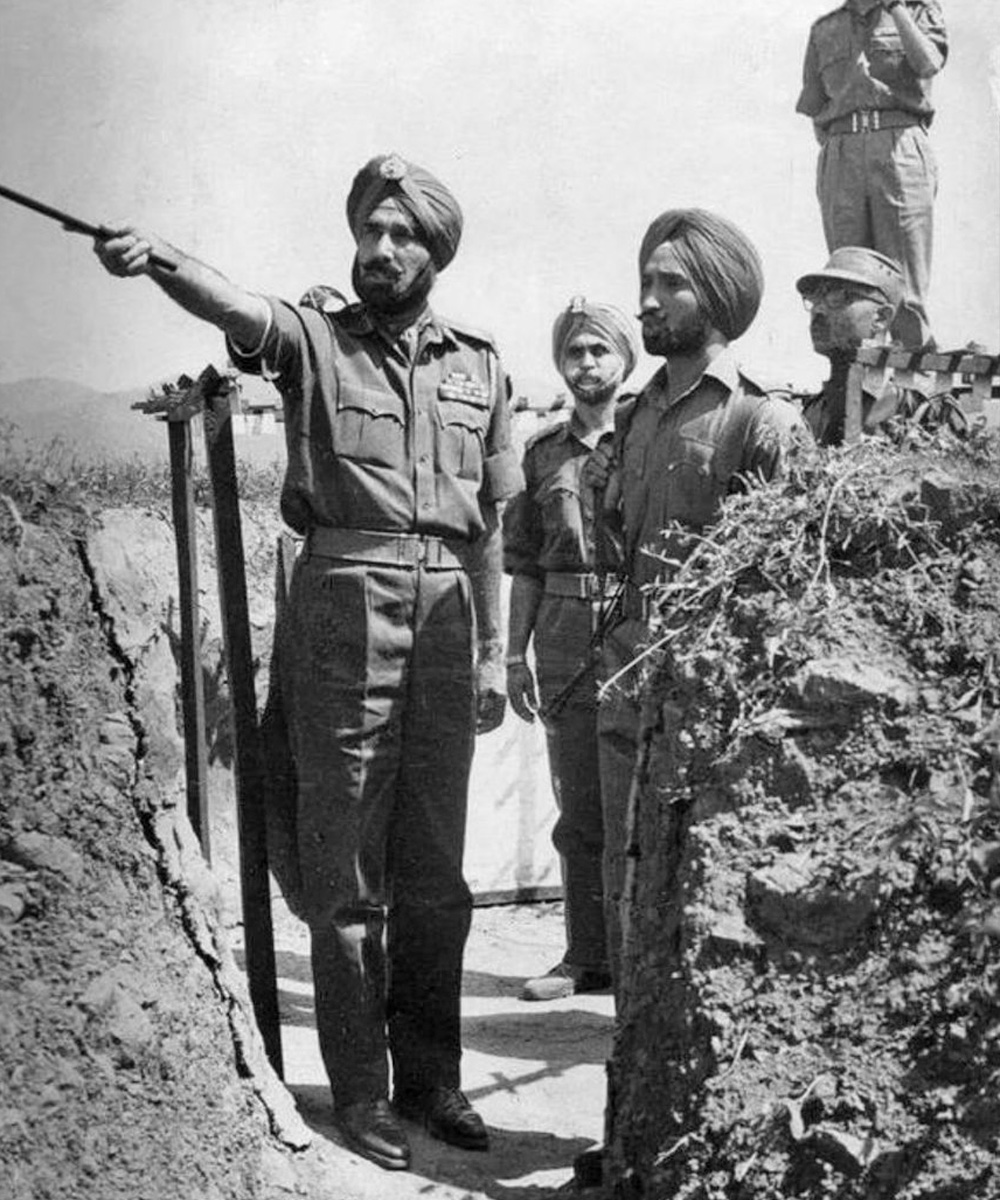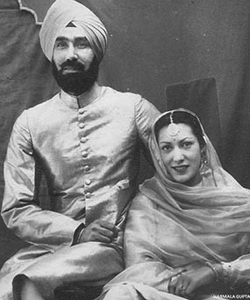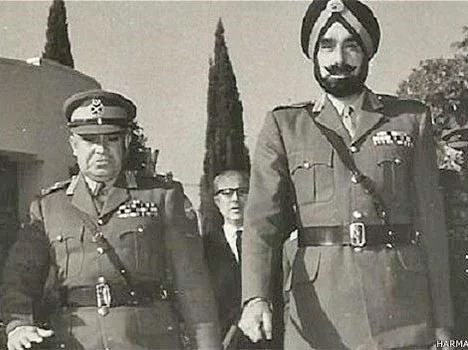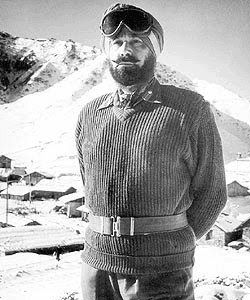
| Born | : | 1 October 1913, Badrukhan |
|---|---|---|
| Died | : | 14 November 1999, New Delhi |
| Service | : | 1935 – 1969 |
| Rank | : | Lieutenant General |
| Awards | : | Padma Vibhushan, Padma Bhushan, Vir Chakra |
Lieutenant General Harbaksh Singh, VrC was a three star General in the Indian Army. As the Western Army Commander, Lt Gen Harbaksh Singh commanded the Indian Army forces and played a key role during the Indo-Pakistani War of 1965. He was awarded the Padma Vibhushan, Padma Bhushan and Vir Chakra.

Harbaksh Singh was born 1 October 1913 at Badrukhan near Sangrur in Punjab. He graduated from Government College, Lahore.
Harbaksh Singh joined the Indian Military Academy in 1933. He was commissioned on 15 July 1935 and started his career with a year's post-commission attachment with the 2nd battalion, Argyll and Sutherland Highlanders at Rawalpindi with whom he saw service on the North West Frontier during the Mohmand campaign of 1935. He later (19 August 1936) joined 5th battalion, 11th Sikh Regiment at Aurangabad.
During the withdrawal from Kuantan on 5 January 1942, the then Capt. Harbaksh Singh drove into a Japanese ambush and was seriously injured. He was taken Prisoner of war as Singapore fell to the Japanese. He was repatriated only in September 1945 after cessation of hostilities.

He recuperated in Ambala, and was soon posted as second-in-command of 4th battalion, Sikh Regiment at Campbelpur. In 1947, he completed the Long Staff Course at Command and Staff College, Quetta and was posted as GSO-1 (operations and training), Eastern Command.
When Lt Col Dewan Ranjit Rai, CO of 1st battalion, Sikh Regiment was killed during the Kashmir operations in 1948, he volunteered to command the battalion. However he was posted as Deputy commander at the headquarters of 161 Infantry Brigade.
He conducted the main battle against the raiders at Shelatang Bridge on 7 November 1947. This decisive battle, involving 1st battalion Sikh Regiment and 4th battalion Kumaon Regiment, proved to be a turning point in the war.
On 12 December 1947, on hearing about the heavy casualties suffered by 1st battalion Sikh, he proceeded to Uri and took over the command of the battalion voluntarily, dropping a star from his rank. He brought back the battalion to Srinagar and began to rehabilitate it.

However, even before the rehabilitation was complete, the battalion was called out to fight the enemy who had crossed the snow-clad Pharikian ki Gali and had occupied Handwara.
He led the truncated battalion, in a daring operations in which, after a series of battles, the battalion drove out the enemy from the valley.
In 1948, he was promoted to the rank of Brigadier and took over the command of 163 Infantry Brigade and began to advance to Tithawal. The movement forward started on 12 May 1948, and after six days, Tithawal was captured. Brigadier Harbaksh Singh was awarded a Vir Chakra for his bravery.
After the Kashmir operations, he went on to serve as the Deputy commandant of the Indian Military Academy at the western command headquarters, director of infantry at the Army headquarters, and in 1957 attended a course at the Imperial Defence College (now Royal College of Defence Studies), UK. In January 1959, he became the first foreign officer to go on attachment with German Army's first division to be raised after their disbandment at the end of World War II.
He returned to India to take over as the General Officer Commanding of the 27 Infantry Division, and later as the GOC of 5 Infantry Division. From July 1961 to October 1962, he was the chief of staff at the Western Command headquarters.
When the Chinese invaded NEFA and Ladakh, he was moved from Shimla to take over the command of IV Corps. He later he moved as the GOC of XXXIII Corps.

In 1964, he was promoted to Army Commander and took over as the General Officer Commanding-in-Chief (GOC-in-C) of the Western Command whose area of responsibility spanned from Ladakh to Punjab. He led the Western Command successfully against the Pakistan Army along the entire border in the Indo-Pakistani War of 1965. The outstanding leadership of Lt Gen Harbaksh Singh had played a key role in boosting the morale of a defeated army turning it into a striking force within just three years of the Chinese encounter.
After serving as the General-Officer-Commanding-in-Chief of the Western Army Command from 1964 to 1969, the General retired in September 1969. Captain Amarinder Singh (later Chief Minister of Punjab) of Patiala served him as his ADC.
Lt Gen Harbaksh Singh died on 14 November 1999.